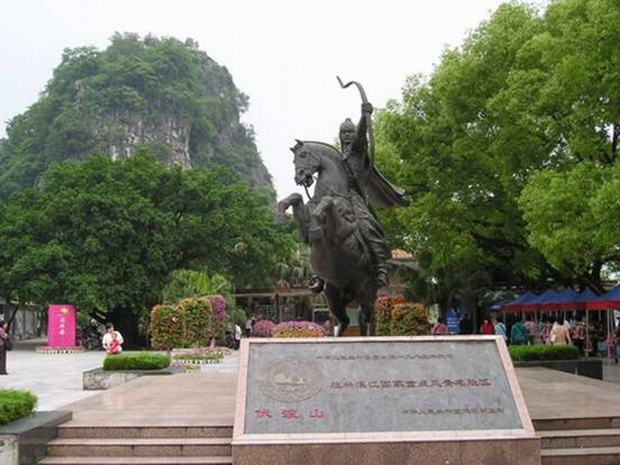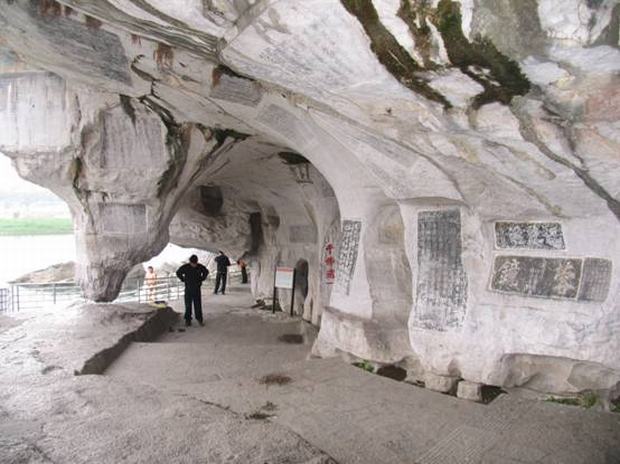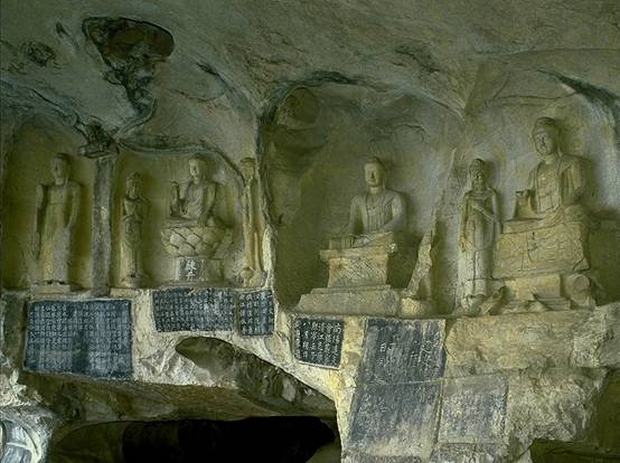Fubo Hill
Towering beside the western bank of the Li River, this peak offers a fantastic view of Guilin. Fubo Hill, also called Wave-subduing Hill, is one of the three representative Karst hills in Guilin downtown, with its shape like spring bamboo shoots, green and exquisite, was known as the guardian of the Li River. Fubo Hill is famous for its unique caves, tranquil scenery and clear water. It is a collection of hill, water, caves, stones, pavilions, gardens and cultural relics, and it is the epitome of the unique Guilin landscape.
Facts
- In Chinese: 伏波山
- Address: No.10 Longzhu Road, Diecai District, Guilin
- Opening time:
06:00 – 18:30 (Apr 1st to Nov 30th)
07:00 – 18:00 (the rest of the year)
- Best time to visit: all the year
- Entrance fee: RMB20

Legend
Its name is variously described as being derived from the fact that the peak descends into the river, blocking the waves, and from a historical hero called General Fubo, Ma Yuan, in Han Dynasty.
According to the legend, the general marched southward here, and had a negotiation with the invaders in the Pearl-Returning Cave. When talked to the deadlock, General Ma Yuan grabbed his sword; a few inches of huge stone pillars were cut off which beyond invaders’ expectation, so they felt threatened and promised to withdraw immediately. They agree to withdraw some distance at which the arrow can reach. The general climbed up to Fubo Hill and pulled his bow; the arrow seemed to be a shooting star, shot through three hills and straight to the boundary of the invaders. The invaders had to flee back to their lair. And that’s also the story of the name of Sword-Testing Rock.
What to See?
At the foot of the hill is Pearl-returning Cave. The legend goes that the cave was illuminated by a single pearl and inhabited by a dragon; one day a fisherman stole the pearl, but he was overcome by shame and returned it. Besides, on the cave wall, dozens of Buddha statues and inscriptions were engraved, which can date back to Tang Dynasty 1000 years ago.

Pearl-returning Cave is the major spot of Fubo Hill scenic area, there are many stone carvings from Tang and Song dynasties in the cave, most of which are titles and poems for travel reviews. The oldest is the one from Tang dynasty in 852, and the most famous one is from a famed painter Mi Fu of North Song dynasty. The tablet and self-portrait were carved in 1074 when he acted as a local official in Guilin. It’s an early work of Mi Fu, few authentic works, even stone inks are rare. But we can appreciate how natural and unrestrained from his words in the Pearl-Returning Cave, that’s why it’s a precious work and makes the cave famed.
There is a Thousand Buddha Cave adjacent to Pearl-Returning Cave. It’s a three-layer cave covering 133 meter square. The major carvings of Buddha are created in the late Tang dynasty. The figures of them look clearly with fine engraving, gentle body and simple dress.
On the eastern side of the hill are a winding corridor facing the river, a teahouse and a "Listening to the Waves Pavilion" built along the cliff of the hill. On the west side, a flight of stone steps leads to the Kuishui Pavilion, which is half way up the hill, then to the top where you can grab a wonderful site to view the city and Li River of Guilin.

How to Get to Fubo Hill?
Take Bus 2, 203, 206 or Sightseeing Bus 1, get off at Fubo Hill Stop, you can easily reach your destination.
If you’re just having a walking trip along Li River or in Guilin downtown, follow Binjiang Road, you can walk to there.
More Attractions in Guilin


